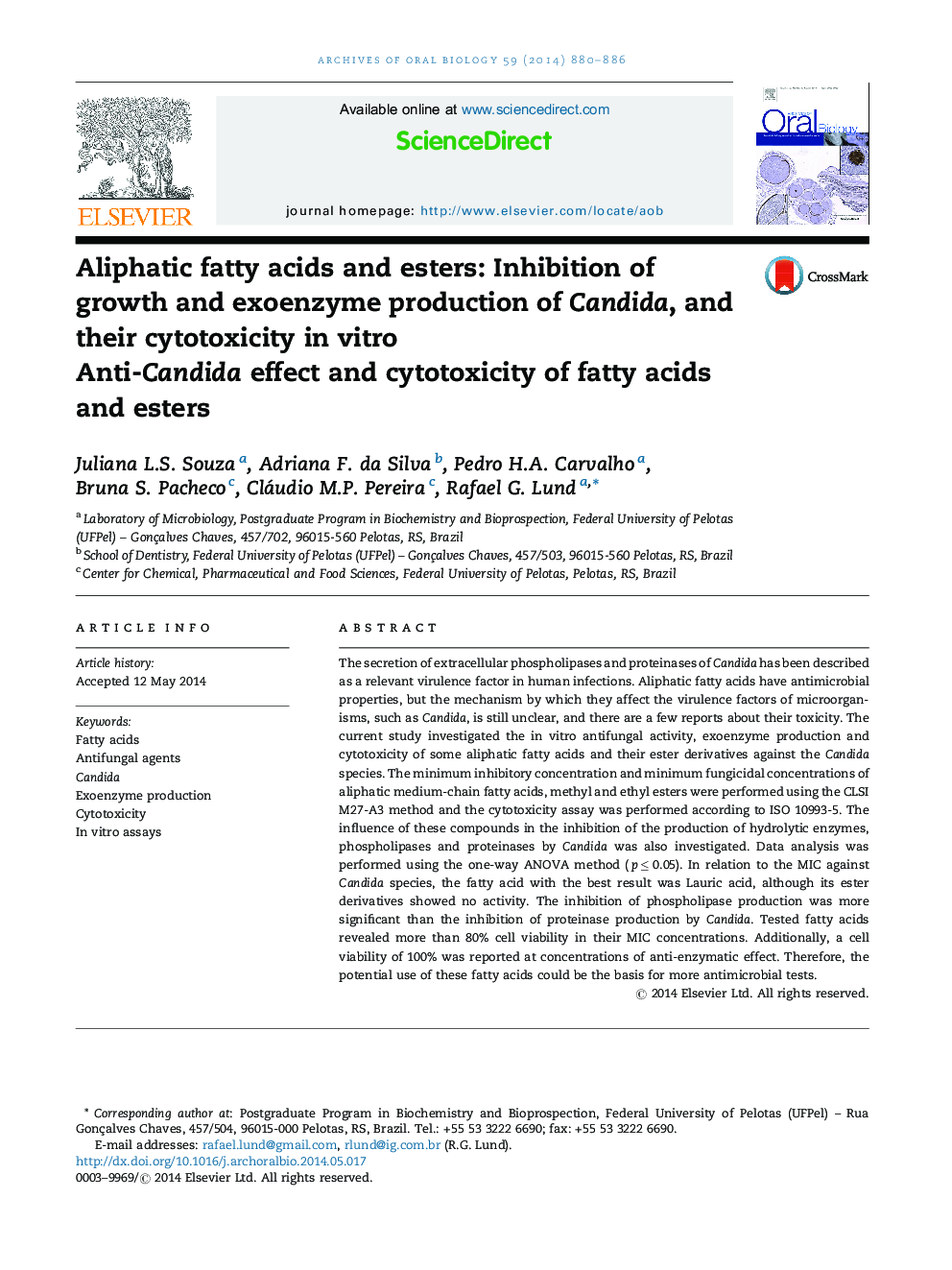| Article ID | Journal | Published Year | Pages | File Type |
|---|---|---|---|---|
| 6050934 | Archives of Oral Biology | 2014 | 7 Pages |
Abstract
The secretion of extracellular phospholipases and proteinases of Candida has been described as a relevant virulence factor in human infections. Aliphatic fatty acids have antimicrobial properties, but the mechanism by which they affect the virulence factors of microorganisms, such as Candida, is still unclear, and there are a few reports about their toxicity. The current study investigated the in vitro antifungal activity, exoenzyme production and cytotoxicity of some aliphatic fatty acids and their ester derivatives against the Candida species. The minimum inhibitory concentration and minimum fungicidal concentrations of aliphatic medium-chain fatty acids, methyl and ethyl esters were performed using the CLSI M27-A3 method and the cytotoxicity assay was performed according to ISO 10993-5. The influence of these compounds in the inhibition of the production of hydrolytic enzymes, phospholipases and proteinases by Candida was also investigated. Data analysis was performed using the one-way ANOVA method (p â¤Â 0.05). In relation to the MIC against Candida species, the fatty acid with the best result was Lauric acid, although its ester derivatives showed no activity. The inhibition of phospholipase production was more significant than the inhibition of proteinase production by Candida. Tested fatty acids revealed more than 80% cell viability in their MIC concentrations. Additionally, a cell viability of 100% was reported at concentrations of anti-enzymatic effect. Therefore, the potential use of these fatty acids could be the basis for more antimicrobial tests.
Related Topics
Health Sciences
Medicine and Dentistry
Dentistry, Oral Surgery and Medicine
Authors
Juliana L.S. Souza, Adriana F. da Silva, Pedro H.A. Carvalho, Bruna S. Pacheco, Cláudio M.P. Pereira, Rafael G. Lund,
